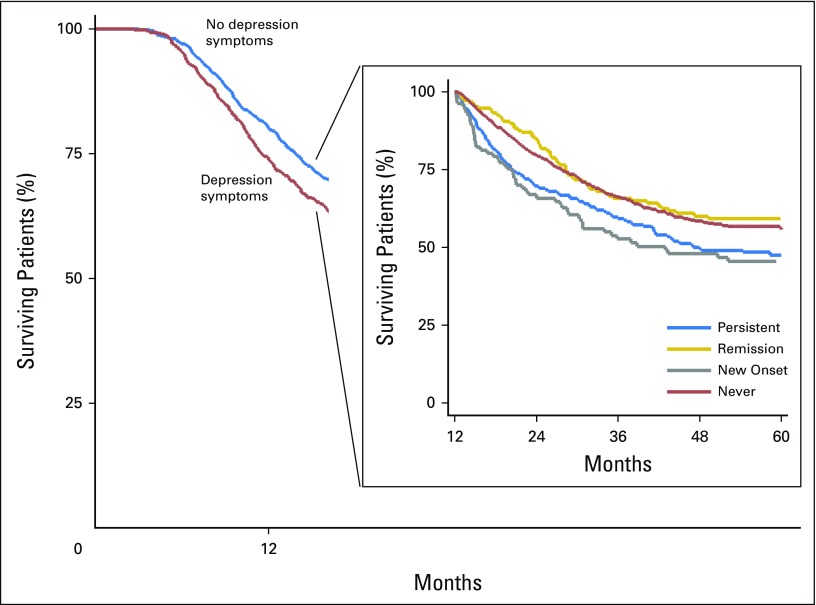Fig 2.
Kaplan-Meier estimates of survival based on depression status. Survival was calculated from baseline survey to the time of death, if it occurred during the study period, or to the time of data censoring. The difference in median estimates of survival between the no depression symptoms group and the depression symptoms group was 193 days. Depression symptoms were a significant predictor of mortality (hazard ratio for death in the depression symptoms group, 1.17; 95% CI, 1.03 to 1.32) after adjustment for age, sex, race/ethnicity, lung cancer stage and histology at diagnosis, income, education, marital status, smoking and alcohol use, and Adult Comorbidity Evaluation-27 (ACE-27) index. (Insert): Survival was calculated from follow-up survey to the time of death, if it occurred during the study period, or to the time of data censoring. Median estimates of survival from cancer diagnosis were 896 days in the never depression symptoms group, 889 days in the remission of depression symptoms group, 746 days in the new-onset depression symptoms group, and 778 days in the persistent depression symptoms group. At follow-up, the difference in median survival between depression symptoms (the new-onset and persistent groups) and no depression symptoms groups (includes the never and remission groups) was 130 days. Persistent depression symptoms (hazard ratio for death 1.42; 95% CI, 1.15 to 1.75) and new-onset depression symptoms at follow-up (hazard ratio for death, 1.50; 95% CI, 1.12 to 2.01) were significant predictors of mortality after adjustment for age, sex, race/ethnicity, income, education, marital status, smoking and alcohol use, cancer stage and histology, and ACE-27 index.

